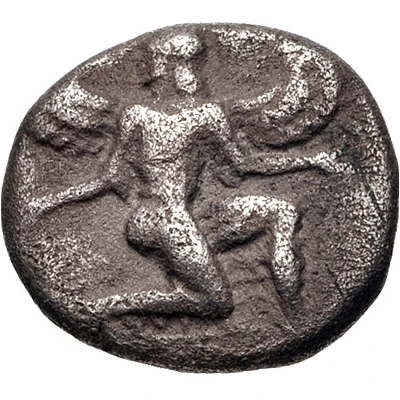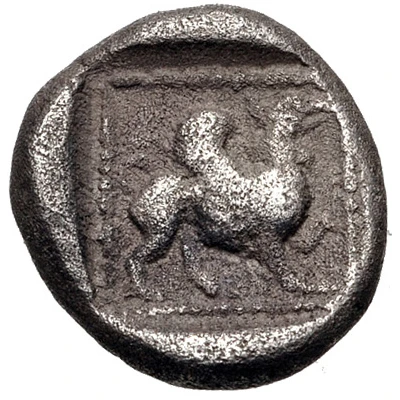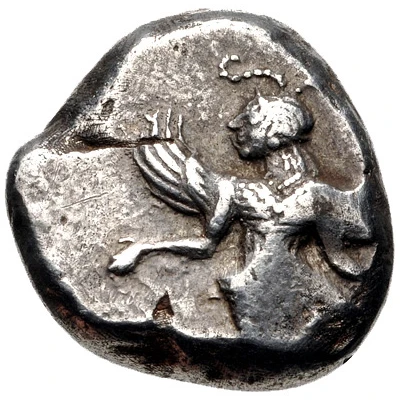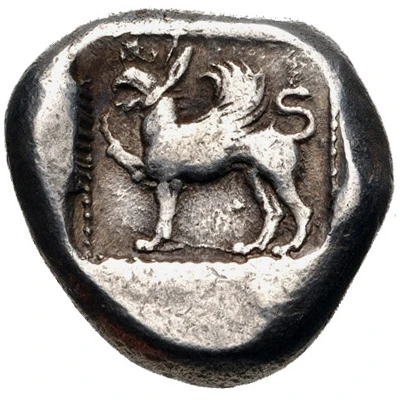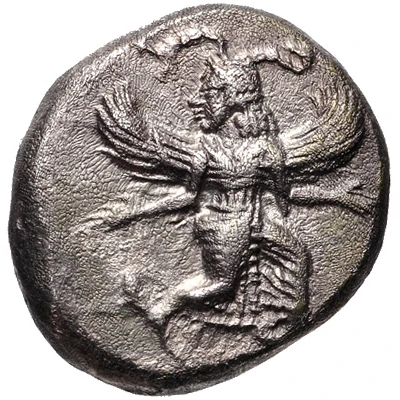
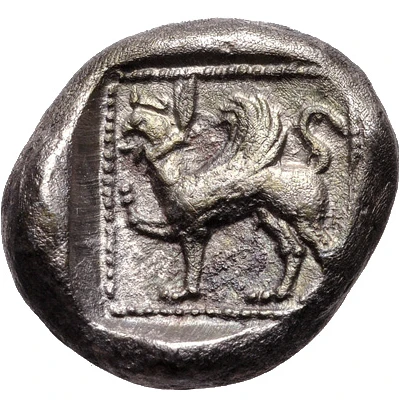

© Classical Numismatic Group, Inc.
Hemidrachm 490 BC - 470 BC
| Silver | 2.93 g | 12.0 mm |
| Issuer | Kaunos (Caria) |
|---|---|
| Type | Standard circulation coin |
| Years | 490 BC - 470 BC |
| Value | Hemidrachm (½) |
| Currency | Aeginetic drachm |
| Composition | Silver |
| Weight | 2.93 g |
| Diameter | 12.0 mm |
| Shape | Round (irregular) |
| Technique | Hammered, Incuse |
| Orientation | Variable alignment ↺ |
| Demonetized | Yes |
| Updated | 2024-10-09 |
| Numista | N#147787 |
|---|---|
| Rarity index | 100% |
Reverse
Griffin standing facing left, raising its forepaw and in a dotted square within incuse square
Script: Greek
Lettering:
AN-TAI
K A
Comment
Konuk Period I, 21-45; Troxell, Winged 15.
Interesting fact
The Hemidrachm coin from Kaunos (Caria) was used as a form of currency in ancient Greece and has a unique design. One side of the coin features a stag's head, while the other side features a quadripartite incuse, which is a pattern of four squares within a square. This design was used to indicate the coin's denomination and to prevent counterfeiting. The use of unique designs and symbols on coins was a common practice in ancient Greece, and it helped to distinguish different cities and their currencies.
